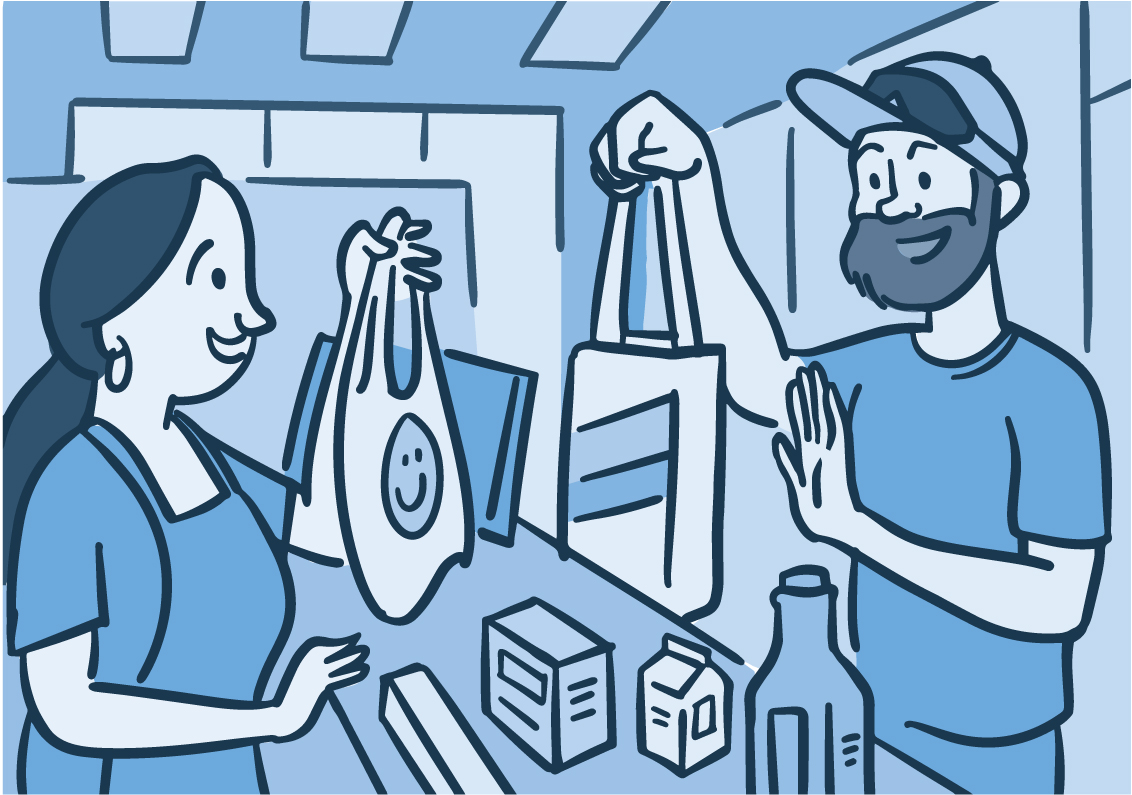The Persistence of Plastics
Can Tiny Plastic Pieces Affect Our Health?

Since their invention over a century ago, plastics have become part of our daily lives. Our food and drinks are often packaged in plastics. Plastics are also found in fabrics, toys, tools, and more. Plastic packaging can help keep medical tools and equipment germ-free. But we make and use so much plastic that plastic pollution is now a big concern.
Some plastics can be recycled. But most are thrown into landfills, where they break down over time into smaller pieces. These have seeped into our oceans and waterways, so tiny plastic bits are showing up in some seafood. And when we wash fabrics made of plastics like nylon or polyester, plastic bits can blow out of our dryers, adding to air pollution.
These tiny plastic particles, called microplastics, are raising health concerns. Microplastics are generally smaller than a sesame seed. They can get into our bodies through the foods we eat and air we breathe.
Scientists have found microplastics in human blood, lungs, guts, and feces. They’ve also been seen in the placenta and breast milk. Although microplastics have been found in people, it’s not yet clear if and how these plastic pieces affect our health.
“Surprisingly, even though we produce millions of tons of plastic each year, we know very little about the health effects of microplastics,” says Dr. Douglas Walker, an expert in environmental health at Emory University. “This is a relatively new and active area of research. We still have much to learn.”
Walker and others have long studied how exposure to many different substances in our environment can affect human health. “We know that exposure to particles in air pollution has been linked to heart and lung diseases,” Walker says. Although microplastics have not been specifically implicated, these tiny plastics likely play a role.
Some researchers are focused on even smaller plastic bits, called nanoplastics. These are too small to be seen with your eyes. Nanoplastics may pose more serious risks to human health because they’re small enough to slip into the body’s cells and organs. Their small size has made nanoplastics especially hard to detect and study.
Earlier this year, an NIH-supported research team developed a powerful new imaging method that could detect both micro- and nanoplastics. They found that, on average, a liter of bottled water contained nearly a quarter-million plastic bits, mostly nanoplastics. This was up to 100 times more plastic pieces than had been seen in prior studies.
The health effects of these tiny plastics are still unclear. But scientists do know that some chemicals used in plastics manufacturing can cause problems. For instance, bisphenol A (BPA) and phthalates have been linked to various health concerns.
“There are over 10,000 chemicals used to manufacture plastics, and only a fraction of those have been studied for potential health effects,” Walker says. “We’re just barely scratching the surface of exposure to plastic-related chemicals.
Despite their drawbacks, Walker says, plastics remain important. “Plastics have changed how we save lives in hospitals, and they have countless other benefits. We could never completely eliminate plastic use, and we shouldn’t try to.”
But if you are concerned about possible health effects, Walker adds, “you can try to be mindful about your use of plastics.” See the Wise Choices box for tips.
NIH Office of Communications and Public Liaison
Health and Science Publications Branch
Building 31, Room 5B52
Bethesda, MD 20892-2094
Contact Us:
nihnewsinhealth@od.nih.gov
Phone: 301-451-8224
Share Our Materials: Reprint our articles and illustrations in your own publication. Our material is not copyrighted. Please acknowledge NIH News in Health as the source and send us a copy.
For more consumer health news and information, visit health.nih.gov.
For wellness toolkits, visit www.nih.gov/wellnesstoolkits.




